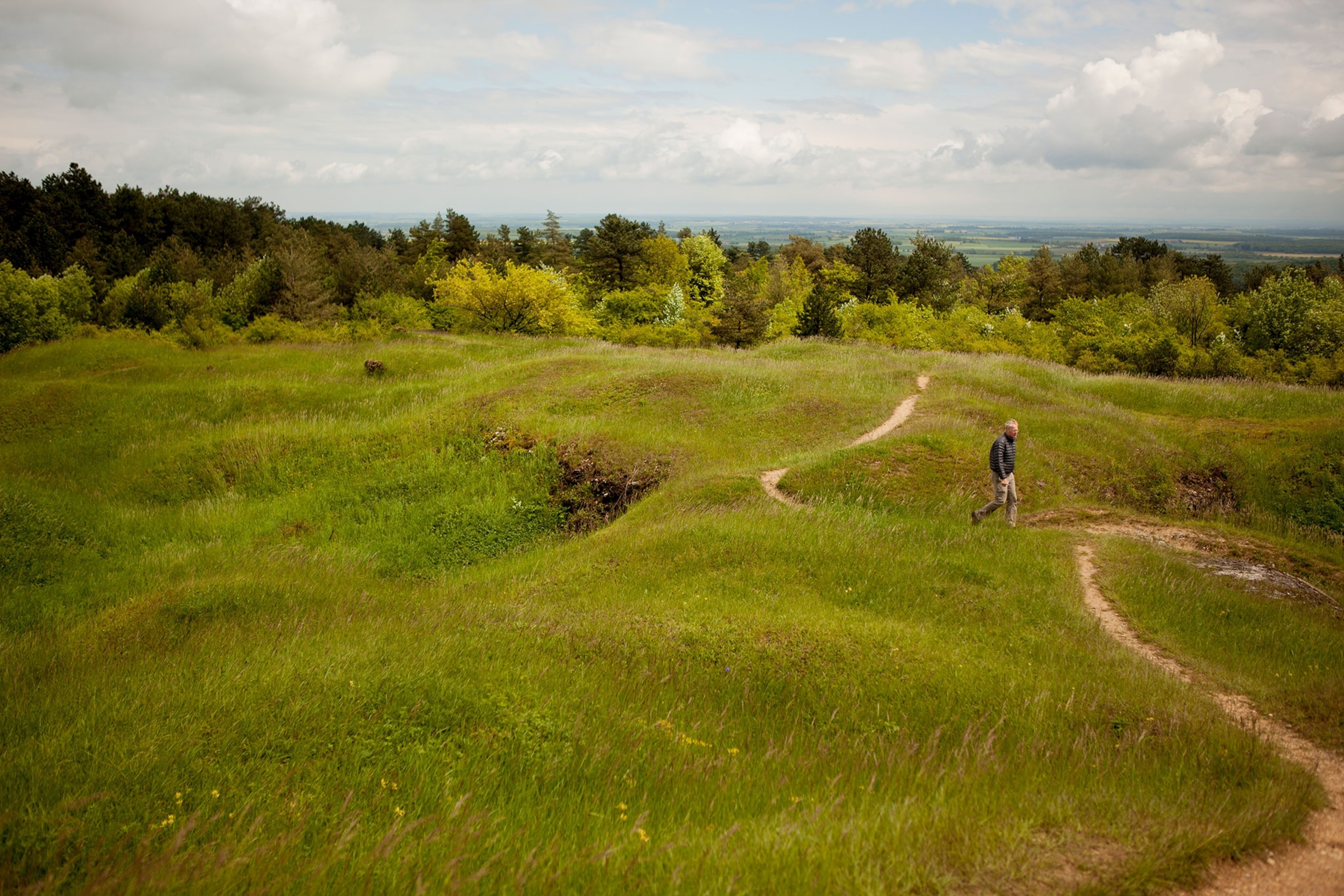It was known as “The Great War”—a land, air and sea conflict so terrible, it left over 8 million military personnel and 6.6 million civilians dead. Nearly 60 percent of those who fought died. Even more went missing or were injured. In just four years between 1914 and 1918, World War I changed the face of modern warfare, becoming one of the deadliest conflicts in world history.
Causes of the Great War
World War I had a variety of causes, but its roots were in a complex web of alliances between European powers. At its core was mistrust between—and militarization in—the informal “Triple Entente” (Great Britain, France, and Russia) and the secret “Triple Alliance” (Germany, the Austro-Hungarian Empire, and Italy).

The most powerful players, Great Britain, Russia, and Germany, presided over worldwide colonial empires they wanted to expand and protect. Over the course of the 19th century, they consolidated their power and protected themselves by forging alliances with other European powers.
In July 1914, tensions between the Triple Entente (also known as the Allies) and the Triple Alliance (also known as the Central Powers) ignited with the assassination of Archduke Franz Ferdinand, heir to the throne of Austria-Hungary, by a Bosnian Serb nationalist during a visit to Sarajevo. Austria-Hungary blamed Serbia for the attack. Russia backed its ally, Serbia. When Austria-Serbia declared war on Serbia a month later, their allies jumped in and the continent was at war.

The spread of war
Soon, the conflict had expanded to the world, affecting colonies and ally countries in Africa, Asia, the Middle East, and Australia. In 1917, the United States entered the war after a long period of non-intervention. By then, the main theater of the war—the Western Front in Luxembourg, the Netherlands, Belgium, and France—was the site of a deadly stalemate.

Despite advances like the use of poison gas and armored tanks, both sides were trapped in trench warfare that claimed enormous numbers of casualties. Battles like the Battle of Verdun and the First Battle of the Somme are among the deadliest in the history of human conflict.
Aided by the United States, the Allies finally broke through with the Hundred Days Offensive, leading to the military defeat of Germany. The war officially ended at 11:11 a.m. on November 11, 1918.
By then, the world was in the grips of an influenza pandemic that would infect a third of the global population. Revolution had broken out in Germany, Russia, and other countries. Much of Europe was in ruins. “Shell shock” and the aftereffects of gas poisoning would claim thousands more lives.
Never again?
Though the world vowed never to allow another war like it to happen, the roots of the next conflict were sown in the Treaty of Versailles, which was viewed by Germans as humiliating and punitive and which helped set the stage for the rise of fascism and World War II. The technology that the war had generated would be used in the next world war just two decades later.
Though it was described at the time as “the war to end all wars,” the scar that World War I left on the world was anything but temporary.

Related Topics
You May Also Like
Go Further
Animals
- This ‘saber-toothed’ salmon wasn’t quite what we thoughtThis ‘saber-toothed’ salmon wasn’t quite what we thought
- Why this rhino-zebra friendship makes perfect senseWhy this rhino-zebra friendship makes perfect sense
- When did bioluminescence evolve? It’s older than we thought.When did bioluminescence evolve? It’s older than we thought.
- Soy, skim … spider. Are any of these technically milk?Soy, skim … spider. Are any of these technically milk?
- This pristine piece of the Amazon shows nature’s resilienceThis pristine piece of the Amazon shows nature’s resilience
Environment
- This pristine piece of the Amazon shows nature’s resilienceThis pristine piece of the Amazon shows nature’s resilience
- Listen to 30 years of climate change transformed into haunting musicListen to 30 years of climate change transformed into haunting music
- This ancient society tried to stop El Niño—with child sacrificeThis ancient society tried to stop El Niño—with child sacrifice
- U.S. plans to clean its drinking water. What does that mean?U.S. plans to clean its drinking water. What does that mean?
History & Culture
- Meet the original members of the tortured poets departmentMeet the original members of the tortured poets department
- Séances at the White House? Why these first ladies turned to the occultSéances at the White House? Why these first ladies turned to the occult
- Gambling is everywhere now. When is that a problem?Gambling is everywhere now. When is that a problem?
- Beauty is pain—at least it was in 17th-century SpainBeauty is pain—at least it was in 17th-century Spain
- The real spies who inspired ‘The Ministry of Ungentlemanly Warfare’The real spies who inspired ‘The Ministry of Ungentlemanly Warfare’
Science
- Here's how astronomers found one of the rarest phenomenons in spaceHere's how astronomers found one of the rarest phenomenons in space
- Not an extrovert or introvert? There’s a word for that.Not an extrovert or introvert? There’s a word for that.
- NASA has a plan to clean up space junk—but is going green enough?NASA has a plan to clean up space junk—but is going green enough?
- Soy, skim … spider. Are any of these technically milk?Soy, skim … spider. Are any of these technically milk?
- Can aspirin help protect against colorectal cancers?Can aspirin help protect against colorectal cancers?
Travel
- What it's like to hike the Camino del Mayab in MexicoWhat it's like to hike the Camino del Mayab in Mexico
- Is this small English town Yorkshire's culinary capital?Is this small English town Yorkshire's culinary capital?
- This chef is taking Indian cuisine in a bold new directionThis chef is taking Indian cuisine in a bold new direction
- Follow in the footsteps of Robin Hood in Sherwood ForestFollow in the footsteps of Robin Hood in Sherwood Forest





